
Catocala is a generally Holarctic genus of moths in the family Erebidae. The genus was erected by Franz von Paula Schrank in 1802. The moths are commonly known as underwing moths or simply underwings. These terms are sometimes used for a few related moths, but usually – especially when used in plural, not as part of a species name – they are used to refer to Catocala only.
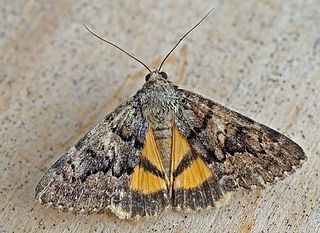
Catocala nymphaea is a species of moth of the family Erebidae. It was described by Eugenius Johann Christoph Esper in 1787. It is found in southern France, Austria, Albania, Portugal, Italy, Greece, Corsica, Sicily, Crete, North Africa, Anatolia, Afghanistan and Kashmir.
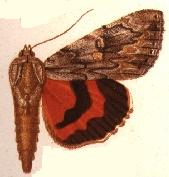
Catocala coccinata, the scarlet underwing, is a moth of the family Erebidae. The species was first described by Augustus Radcliffe Grote in 1872. It is found in southern Canada and the eastern United States, following river valleys onto the Great Plains and down to Florida.
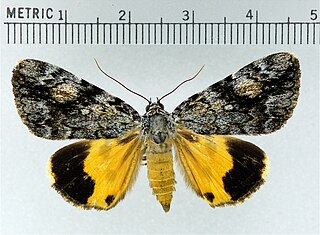
Catocala amica, the girlfriend underwing, is a moth of the family Erebidae. The species was first described by Jacob Hübner in 1818. It is found from southern Canada through the United States east of the Rocky Mountains, ranging westward to Oklahoma and Arizona, northward to Minnesota and southwestward to Texas.
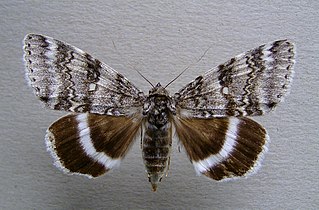
Catocala relicta, the white underwing or relict, is a moth of the family Erebidae. The species was first described by Francis Walker in 1858. It is found in southern Canada, from Newfoundland to Vancouver Island, south to Missouri, and Arizona.

Catocala conversa is a moth of the family Erebidae first described by Eugenius Johann Christoph Esper in 1787. It is found in the Mediterranean zone and parts of the sub-Mediterranean zone.

Catocala diversa is a moth of the family Erebidae first described by Carl Geyer in 1826. It is found in Spain, south-eastern France, Italy, the Balkans, European southern Russia and Israel.
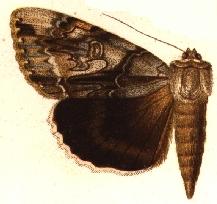
Catocala vidua, the widow underwing, is a moth of the family Erebidae. The species was first described by James Edward Smith in 1797. It is found in North America from southern Ontario, into Maine, New Hampshire and Connecticut, south at least to Tennessee, Georgia and Alabama, west to Texas and Oklahoma, and north to Wisconsin.
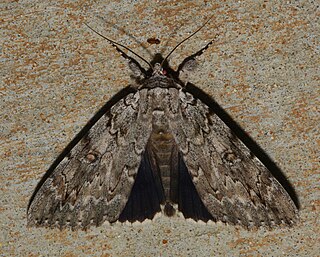
Catocala robinsonii, or Robinson's underwing, is a moth of the family Erebidae. The species was first described by Augustus Radcliffe Grote in 1872. It is found in North America from southern Ontario and New Hampshire south to Florida west to Oklahoma, Missouri and Arkansas and northward to Illinois, Indiana, and Michigan.

Catocala desdemona, the Desdemona underwing, is a moth of the family Erebidae. The species was first described by Henry Edwards in 1882. It is found in Utah and Arizona, ranging south into New Mexico and Texas, and onwards through Mexico up to Honduras.
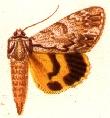
Catocala gracilis, the graceful underwing, is a moth of the family Erebidae. The species was first described by William Henry Edwards in 1864. It is found in North America from Manitoba to Nova Scotia and Maine, south through Connecticut, New Jersey to Florida and west to Mississippi and Missouri.

Catocala herodias, the Herodias underwing or Gerhard's underwing, is a moth of the family Erebidae. The species was first described by Strecker in 1876. The nominate form is found in the US states of Texas and Oklahoma. Subspecies Catocala herodias gerhardi is found from Massachusetts, Connecticut, New York to Virginia. The gerhardi subspecies is listed as endangered in Connecticut.

Catocala verrilliana, or Verrill's underwing, is a moth of the family Erebidae. The species was first described by Augustus Radcliffe Grote in 1875. It is found in the US from Washington and Oregon to Colorado and south to California, Arizona and Texas, and Cimarron County in western Oklahoma.

Catocala andromache, the Andromache underwing, is a moth of the family Erebidae. The species was first described by Henry Edwards in 1885. It is found in the United States from southern California to Arizona.

Catocala micronympha, the little nymph underwing or little bride underwing, is a moth of the family Erebidae. The species was first described by Achille Guenée in 1852. It is found in North America from southern Ontario, Quebec, and Manitoba through New Hampshire, Connecticut, and New Jersey to Florida, west to Texas and then north through Oklahoma, Kansas, Iowa, to Wisconsin and Minnesota and then east to Michigan.

Catocala similis, the similar underwing, is a moth of the family Erebidae. The species was first described by William Henry Edwards in 1864. It is found in North America from Ontario and Quebec south through Maine and Connecticut to Florida, west to Texas and Oklahoma, and north to Minnesota.
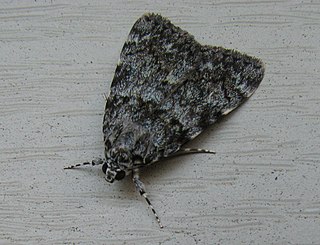
Catocala lineella, the lineella underwing, little lined underwing or steely underwing, is a moth of the family Erebidae. The species was first described by Augustus Radcliffe Grote in 1872. It is found in North America from Ontario and Quebec south to Florida west to Texas and north to Ohio.

Catocala messalina, the Messalina underwing, is a moth of the family Erebidae. The species was first described by Achille Guenée in 1852. It is found in the United States from Virginia south to Florida and west to Texas and north to Kansas.
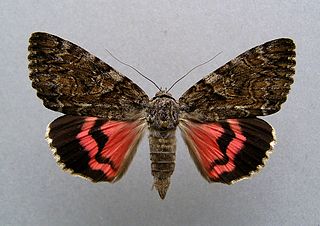
Catocala dilecta is a moth of the family Erebidae first described by Jacob Hübner in 1808. It is found in north-western Africa through southern Europe to Asia Minor.
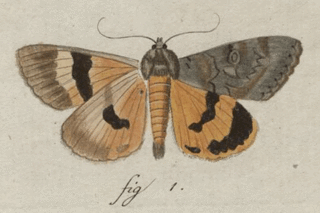
Catocala neonympha is a moth in the family Erebidae first described by Arthur Gardiner Butler in 1877. It is found in south-western Russia, Ukraine, Kazakhstan, eastern Turkey, Iraq, Armenia, Kurdistan, Afghanistan, the Altai Mountains and southern Siberia.













